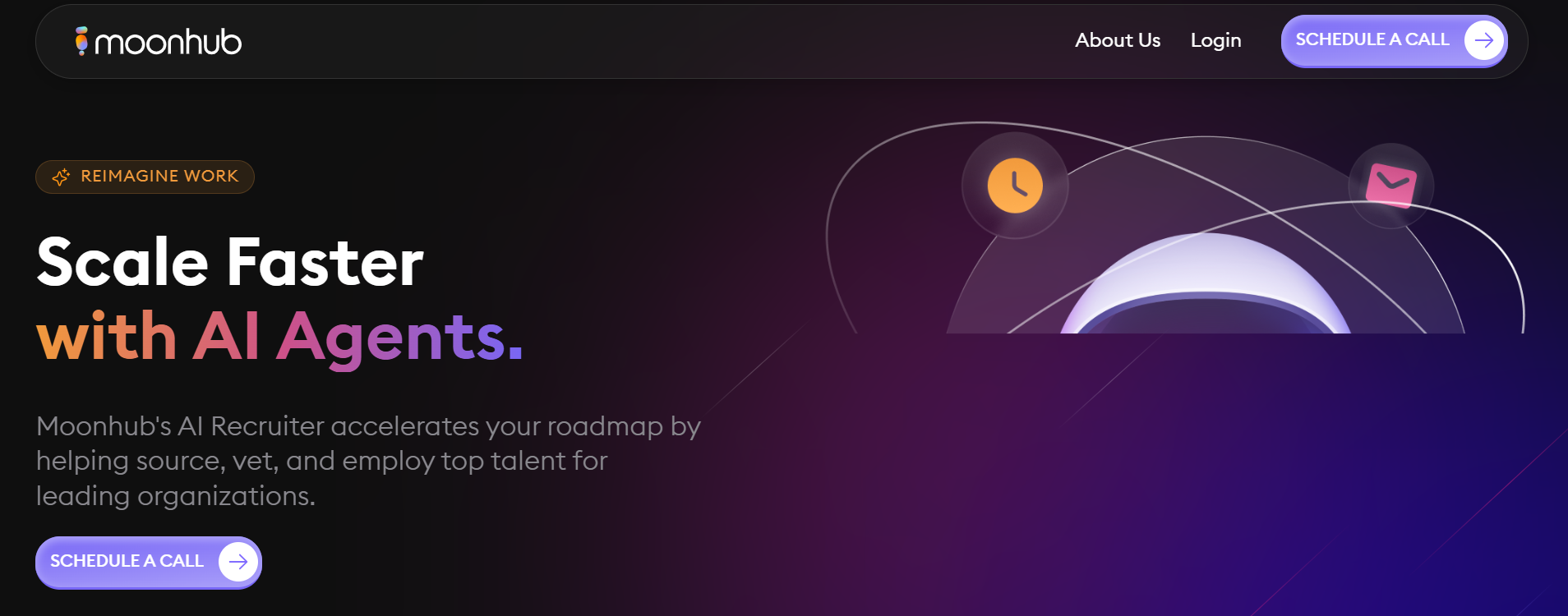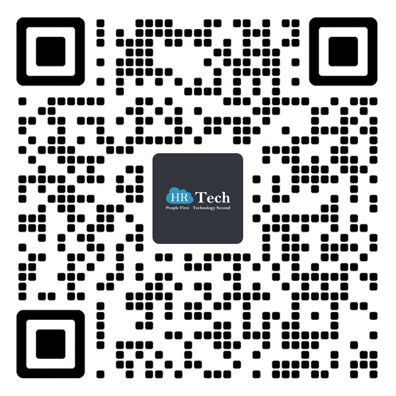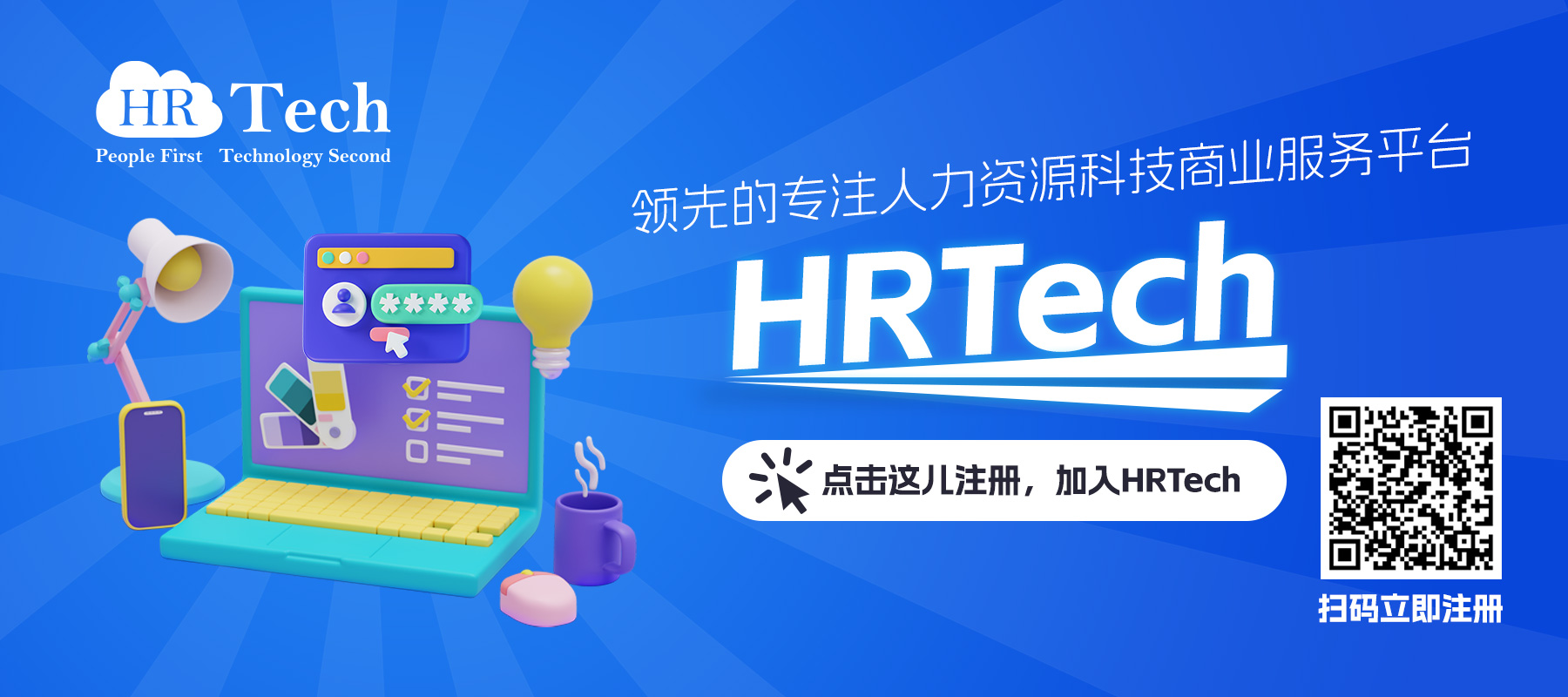资讯
【伦敦】中小企业财务管理平台Mimo获得1800万欧元融资,以简化B2B支付流程
为中小企业和会计师简化全球支付、现金流和财务管理的平台Mimo获得了1800 万欧元的新投资。此次融资由 Northzone 领投,公司将借此推出自己的平台。
参与本轮融资的其他投资者包括可可风投(Cocoa Ventures)、Seedcamp、Upfin VC,以及由 Fost 安排的资产支持融资,还有来自 Stripe、GoCardless、Wayflyer 和 Anyfin 等公司的创始人和早期运营商等天使投资者的参与。Mimo 将利用新的股权融资,继续为中小企业打造 B2B 支付解决方案,并扩充员工队伍。
Mimo 已经与 50 多家中小企业和财务专业人士合作,每月通过其早期接入产品处理数百万英镑的交易。公司成立于 2023 年,创始人是前 Capchase 欧洲总经理兼 Northzone 投资经理 Henrik Grim(首席执行官)、Alexander Gernandt Segerby(首席运营官)和 Andreas Meisingseth(首席技术官)。公司在伦敦和斯德哥尔摩设有办事处。
近年来,帮助中小企业管理财务的 SaaS 工具层出不穷。这意味着,对于一家小型企业来说,财务管理的各种要素都有大量的应用程序,每种应用程序都能完成不同的简单任务,如记录发票、进行国际支付或管理工资单。这种没有捆绑的系统既耗时,又对簿记管理和对账具有挑战性。
每五家倒闭企业中,就有四家的主要失败原因是现金流管理。小企业必须使用零散的财务工具系统来管理现金流,账单与成本和工资所需的资金到账之间往往仍有很大的滞后性,英国中小型企业平均被拖欠约 22,000 英镑的逾期付款。虽然 SaaS 和电子商务支付系统的创新抵消了其中一些问题,但这些垂直行业以外的中小企业仍然面临着持续的现金流困境和管理资金进出的行政烦恼。中小型企业占欧洲 GDP 的一半,促进这些企业之间的资金流动可以防止许多企业倒闭,并有可能释放它们的增长潜力。
Mimo 联合创始人兼首席执行官 Henrik Grim 评论说: "我亲眼目睹了中小企业在管理资金时必须面对的耗时和分散的流程。中小型企业和财务专业人员不得不在应用程序和电子表格之间跳来跳去,以支付发票或进行国际支付,同时还要努力跟踪和管理现金流。Mimo 将其整合到一个工具中,使企业可以轻松管理资金流动,更快地接收任何货币的付款。我们很高兴能得到投资者的支持,帮助中小企业全面掌控财务状况。
Mimo成立于2023年,是 "Money In,Money Out "的缩写,它提供了一套金融工具,捆绑了中小企业更好地了解和控制其现金流所需的功能。Mimo 为企业、会计师和簿记员提供了一个单一的工具,使他们能够更轻松地进行管理并做出更好的财务决策,而不是依赖包括银行、SaaS 工具和外汇经纪商在内的脱节的应用网络来管理财务。通过该平台提供的信贷服务,可以最大限度地降低风险,优化营运资本,使企业可以根据自己的条件发送和接收付款。
通过 Mimo 的工具,中小型贸易企业和财务专业人员只需点击一下,就能以任何货币向供应商付款、获取营运资金,并更快地获得客户付款。对于持有库存或进行国际贸易的企业,如消费品、零售、酒店或批发企业,这需要大量发票和多币种管理。Mimo 的财务管理解决方案解决了这些行业所面临的费时费力的问题。该平台消除了小企业之间资金流动的障碍,促进了小企业贸易的发展。
Northzone的Jessica Schultz说: "他们之前曾在iZettle公司共事,深知在中小型企业金融市场建立和赢得市场需要什么。如今,企业在协调管理支付、现金流和融资方面面临着真正的难题。我们相信,Mimo 打造真正财务管理平台的愿景与我们的理念不谋而合。Mimo 如今已经取得的商业成功证明了团队的动力和市场优势。
Fost 合伙人 Mehdi Ousahla 补充说:"Mimo 团队的远见卓识、产品执行力和复杂性给我们留下了深刻印象。我们非常荣幸能够支持他们的持续发展。
资讯
美国背调行业巨头Checkr裁减32%的员工以优化运营效率,估值50亿美元
Checkr是一家提供员工背景检查服务的初创公司,最近由于经济环境的影响,导致公司裁员32%,共382名员工。这家公司的最后一次估值为50亿美元。裁员涵盖了所有部门和各个级别,旨在提高运营效率并确保公司的长期健康。Checkr还向受影响的员工提供了至少10周的遣散费和健康保险,以及职业和心理健康支持。此外,Checkr在2021年的一轮融资中筹集了2.5亿美元,迄今为止共筹集了6.79亿美元。
在科技行业持续经历经济压力和成本削减的背景下,位于旧金山的背景审查平台Checkr宣布裁减382名员工,占其总员工数的32%。周二在全公司范围内进行了跨部门的人员裁减,并通过电子邮件确认了这一消息。此次裁员是该公司应对不确定经济环境,保证长远发展健康的策略调整。
自2014年成立以来,总部位于旧金山的Checkr已在背景审查市场占据了重要地位,服务客户包括Instacart、DoorDash和Lyft等美国主要的在线服务平台。Checkr的服务允许企业通过检查潜在雇员的驾驶和犯罪记录以及基本身份信息来通过API的形式进行背景审查。
近两年来,随着科技行业整体放缓和裁员浪潮的到来,Checkr亦感受到了市场的压力。公司此次裁员决定正值美国科技行业领导的大规模裁员潮中,根据职位调整公司Challenger, Gray & Christmas的报告,尽管今年迄今为止的裁员总数比去年同期下降了5%,但3月份的裁员公告数量却自去年1月以来首次出现大幅增长。
Checkr在声明中表示,此次裁员能够使公司“更加高效地运营,并确保业务的长期健康”。为了支持受影响的员工,Checkr提供了至少10周的遣散费和健康保险,并提供了职业和心理健康支持。
此外,尽管面临经济挑战,Checkr依然保持着强劲的资金支持背景,已累计筹集资金达6.79亿美元。最后一次融资是2021年9月的2.5亿美元,当时估值达到了50亿美元!在背景审查行业中,Checkr的技术和服务依然被视为行业标杆。
这次裁员事件不仅反映了Checkr应对市场变化的策略,也是科技行业广泛采取的成本控制措施的一部分。随着经济环境的不断变化,Checkr和其他科技公司将需要不断调整策略,以保持其市场地位和业务的稳定发展。
资讯
【英国】全球背景筛查公司Veremark获得280万欧元融资,用于扩大全球背景筛查能力
全球背景筛查公司Veremark 在 B 轮前融资中获得 280 万欧元,本轮融资由 Samaipata 和 Stage 2 Capital 领投,ACF Investors 和 Vulpes Investment 参投。这笔投资将用于支持Veremark公司继续收购客户和进一步开发筛查技术。
更加合规的招聘需求已成为全球性要求,仅背景筛选一项就相当于一个急需创新的80亿美元全球市场。 Veremark 提供全球背景筛查服务,帮助公司对潜在员工、业务合作伙伴、有限合伙人和创始人进行检查,从而降低雇用不合格或法律上不合适的人员或与他们共事的风险。
为了满足日益增长的需求,Veremark 公司最近收购了一家位于澳大利亚和新西兰的背景审查公司 Employrite,从而扩大了在亚太地区的业务范围。公司还开发了自己的基于区块链的求职者职业护照Verepass,使求职者能够拥有和管理自己的验证证书。这减少了重复检查的需要,为公司节省了时间和金钱。
Veremark公司创始人兼首席执行官Daniel Callaghan说: "我们将继续履行我们的使命,在招聘过程和整个工作场所中提高信任度。 这笔额外的资金将使我们能够扩大我们的全球影响力,增强我们的技术,并为我们在最适合业务发展的时候实现下一轮增长提供一个重要的跑道,我们将继续授权全球企业做出明智的招聘决策。"
此次投资是Veremark公司在经历了一段持续增长的时期后获得的。自2022年7月完成A轮融资以来,该公司的客户群扩大了两倍,估值也比上一轮增长了50%。公司还与世界各地的主要行业参与者开展合作,其中包括 OVO Energy、Wise 和施耐德电气。
Samaipata 公司创始人兼执行合伙人Jose Del Barrio评论说: "围绕工作场所合规性和法规的增长趋势是持久的,也是全球性的。 无论市场条件如何,Veremark 公司一直证明自己有能力增加并留住各地区和各行业的客户。 我们对该公司改善工作场所信任度的长期愿景感到兴奋,并希望在该公司进一步扩大规模时与之合作。
ACF Investors 的执行合伙人 Tim Mills 补充说:"据估计,招聘失败的成本是其年薪的三倍,Veremark 高效的背景筛选解决方案有助于企业做出完全明智的招聘决策。尽管全球招聘市场放缓,但公司仍凭借其为客户带来的价值实现了超常规增长。我们很高兴能继续支持 Veremark 的卓越发展历程,因为它将继续重新定义工作场所合规性和筛选。
关于Veremark
Veremark于2019年在伦敦成立,目前在新加坡、美国、澳大利亚、新西兰和菲律宾均设有办事处。在为全球企业进行候选人背景调查的同时,Veremark 还帮助企业重新筛选现有员工,以维护工作场所的安全和幸福。Veremark 提供自动化解决方案,帮助公司核实员工的就业历史、学历、犯罪和信用记录等资质。
资讯
人才招聘解决方案供应商Cadient已被私募股权公司Basis Vectors Capital收购
Cadient公司是小时工招聘领域人才招聘解决方案供应商,已被私募股权和技术投资公司Basis Vectors Capital收购,公司专注于为 B2B SaaS 领域的市场领导者创造长期价值。此举将有助于 Cadient 通过有机增长和战略合作伙伴关系实现扩张计划。
交易条款尚未披露。Cadient 首席执行官 Jon Puckett 将继续负责公司的日常运营。
Cadient 公司在招聘行业拥有 20 多年的经验,已经处理了 6.7 亿多名候选人,促成了 700 多万次招聘,为全球最大的小时工招聘企业大大降低了人员流动率,提高了生产率。公司的服务重点是大批量精准招聘,并擅长招聘多样化和高保留率人才。Cadient 的解决方案已在医疗保健、酒店和零售行业取得了卓越的成果,公司正努力将其服务扩展到更多领域。
"Cadient公司首席执行官Jon Puckett表示:"在Cadient公司,我们很高兴能与志同道合的合作伙伴一起开启新的篇章,实现人才招聘的变革。他补充说:"通过与 Basis Vectors Capital 的合作,我们获得了他们在授权和扩展 SaaS 业务方面的宝贵专业知识。这次合作将增强我们为客户提供卓越价值的能力,并实现我们雄心勃勃的市场扩张目标。我们将利用这种合作关系推动 Cadient 的创新,并塑造卓越招聘的未来。
"Basis Vectors Capital 首席执行官 Ambarish Gupta 表示:"我们很高兴能与 Cadient 的管理团队合作,在他们取得的骄人成绩的基础上推动更多的增长。他进一步补充说:"此次收购证明了我们对Cadient公司改变招聘领域的潜力充满信心,尤其是他们长期以来取得的成功,以及目前对高效和有效招聘解决方案的巨大需求。
关于 Cadient
Cadient 公司(前身为 Unicru)成立于 2002 年,是一家领先的人才招聘解决方案提供商,专注于复杂的小时工招聘。他们的解决方案旨在简化招聘流程,使企业能够放心地招聘高质量的小时工候选人。Cadient 的平台由专业的专家团队提供支持,确保客户获得强大的软件和无与伦比的服务。
关于 Basis Vectors Capital
Basis Vectors Capital是一家总部位于纽约的私募股权基金,主要收购B2B SaaS公司,以提高其财务效率。它采用专有的 SaaS 机器平台进行销售、营销、工程和财务运作,被 Axial 评为 2024 年 50 强中低端市场技术投资者和并购顾问。Basis Vectors Capital 总部位于纽约,在硅谷、印度和乌克兰也有业务。
资讯
【美国】综合护理人员支持平台Cariloop获得2000万美元C轮融资,以加速发展并扩展护理人员支持解决方案
领先的综合护理人员支持平台Cariloop宣布成功完成 C 轮融资,共筹集 2,000 万美元。这一具有里程碑意义的融资由ABS Capital领投,现有投资者Noro-Moseley Partners、KCRise Fund、Revolution's Rise of the Rest Seed Fund 和Patterson Thoma Family Office 参投。
"Cariloop联合创始人兼首席执行官Michael Walsh表示:"近75%的员工都在兼顾工作与照顾他人的角色,这为企业为员工中最大的一个群体提供关键支持提供了重要机会。"我们提供的服务为企业提供了一种支持其在职护理人员并促进员工福利、生产率和保留率的方式。这笔投资将加快我们向更多雇主提供创新解决方案的步伐,并最终使我们的平台成为数百万最需要帮助的在职护理人员的基本福利。
Cariloop 的收入在过去三年中增长了近 300%,并因此跻身Inc. 5000和德勤高科技高成长500强。公司目前为宝洁、毕马威、CAE、美国癌症协会、Arthur J. Gallagher、ASPCA 和 Insperity 等组织提供服务,净收入保持率接近 120%,NPS 得分超过 80 分。
Cariloop 的 C 轮投资将主要推动公司扩大与雇主和护理人员的市场接触,并对其数字和管家级产品进行一系列重要投资。此外,本轮融资还将推动现有会员更深入地参与,并支持护理人员及其家人的迫切需求。
"ABS Capital 合伙人Jennifer Krusius说:"Cariloop 在全国范围内已经取得了显著的客户吸引力和增长,这说明了该解决方案的有效性--它为努力提高工作效率和家庭护理的员工提供了一流的支持。"这是一个成功的组合,我们很高兴能与这家公司合作,为如何提供护理支持设立新的标准,让更多员工在工作中取得成功。
作为 C 轮融资的一部分,Krusius 将加入 Cariloop 董事会,ABS Capital 合伙人 Cal Wheaton 将作为董事会观察员加入。Cariloop 的联合创始人 Steven Theesfeld 和 Patterson Thoma Family Office 的首席投资官 Colin Patrick 将退出董事会。
关于 Cariloop
Cariloop通过将家庭与雇主赞助的数字化护理人员支持平台连接起来,帮助家庭管理亲人的护理需求。经验丰富的护理教练提供个性化指导和专业支持,而 Cariloop 的数字平台则提供寻找、预订和支付护理、获取信息以及使用护理所必需的工具等方面的资源。该综合解决方案旨在减轻员工的压力和职业倦怠,从而提高工作效率,减少雇主的缺勤率。
关于 ABS Capital
ABS Capital 为 B2B 软件和技术服务企业提供成长型股权资本,这些企业拥有强大的技术和数据基础,希望与合适的合作伙伴一起扩大规模。30 多年来,ABS Capital 一直专注于成长期企业的发展。在此期间,ABS Capital 已通过八只基金向约 130 家公司投资了超过 25 亿美元。ABS Capital 将投资、运营、基础设施、技术和业务发展技能与数据驱动的业务战略、市场研究和分析相结合,与优秀的管理团队密切合作,扩大成长型企业的成功。ABS Capital:将新兴成长型企业打造成行业领导者。
资讯
【美国】人工智能教育科技初创公司Pete获得200万美元种子轮融资,提供个性化劳动力学习
总部位于奥兰多的人工智能教育科技初创公司 PETE 成功完成了种子轮融资,获得了由 Cofounders Capital 领投的 200 万美元,Cofounders Capital 是美国东南部一家专注于 B2B 软件企业的著名早期种子基金。本轮融资还包括来自奥兰多地区天使投资人的资金。
此次融资标志着 PETE 的一个重要里程碑,推动这家年轻的公司进入令人兴奋的发展阶段。PETE 由 Jacques Fu 和 Luis Garcia 创立,Jacques Fu 曾是奥兰多首家本土金融科技独角兽公司 Stax 的联合创始人,而 Luis Garcia 则是 Full Sail 大学新兴技术部前副总裁及其在线学位课程的创始执行官。
自2023年6月成立以来,PETE迅速赢得了业界的关注,并与多家合作伙伴客户建立了合作关系,利用其高性价比的人工智能学习解决方案提供个性化和适应性培训体验。PETE 将利用注入的资金加强公司的销售工作和战略营销计划,并继续开发其正在申请专利的人工智能专利技术。
"Cofounders Capital 创始合伙人David Gardner表示:"从一开始,PETE 技术解决方案的先进性和管理团队的业绩记录就给我们留下了深刻印象。"我们一直在密切关注人工智能对企业教育领域的巨大颠覆潜力,我们已经找到了支持这一领域的合适技术和团队。
作为一个平台,PETE 通过为无限的学习者提供无限的人工智能内容和无限的课程,使企业能够毫不费力地扩大培训规模。从量身定制的入职培训计划到动态销售和合规培训,PETE 是一个端到端的学习解决方案,可以在您自己的品牌虚拟学院中创建和管理数字课程,无需培训部门。
"我们非常高兴能与 Cofounders Capital 建立合作伙伴关系,这将为我们带来的不仅仅是财务优势。他们经验丰富的团队所拥有的知识资产和合作机会对我们来说都是宝贵的资源。他们在 B2B SaaS 领域的丰富知识和经验将推动我们前进,完善我们的战略,加速我们的发展轨迹,"PETE 总裁Luis Garcia说。"这次合作是我们发展历程中的关键一步。我们迫切希望充分发挥此次合作的潜力,并从这样一位经验丰富的投资者的智慧和见解中获益。
关于PETE
PETE成立于佛罗里达州奥兰多市中心,是人工智能驱动的学习平台领域的领先企业。PETE 提供一整套经济高效、可定制的解决方案,帮助企业大规模提供个性化的劳动力学习。PETE 专注于开发人工智能驱动的课程,以满足不同的培训需求,包括入职培训、法规遵从、产品知识、技术技能等。该平台通过 PETE 的学习管理系统 (LMS) 提供内容的无缝托管和分发,并提供一套管理工具来跟踪学员的学习进度。PETE 的愿景是通过开创性的技术,实现适应性、参与性和有效性学习,成为教育和培训不可或缺的一部分。PETE 团队致力于帮助各种规模的组织优化其培训计划,最大限度地提高培训效果,而无需雇用额外的培训资源。
关于 Cofounders Capital
Cofounders Capital于2015年在北卡罗来纳州凯里成立,是一家专注于美国东南部B2B软件企业的早期种子基金。Cofounders Capital 正在投资其第三支 5000 万美元的基金,由连续成功的企业家 David Gardner、Tim McLoughlin 和 Tobi Walter 管理。
资讯
【美国】人工智能技术公司GoodGist获得100万美元融资,应对企业技能危机
GoodGist是一家位于加利福尼亚州福斯特市的公司,专门从事企业技能开发和知识管理自动化,公司获得了 100 万美元的融资。
支持者包括 FortyTwo.VC、Cedar Ridge Ventures、DX Partners 以及来自微软和亚马逊等科技公司的天使投资人。
公司打算利用这笔资金在全球市场推出多语言平台,扩大团队以加强研发工作,并加强产品供应以缓解技能差距和信息过载问题。
GoodGist 公司由首席执行官Ruban Phukan领导,专注于企业技能开发,利用人工智能生成技术进行专业技能提升、再培训和知识管理。公司可以个性化和优化企业知识的使用,按需提供知识,提高员工的生产力和参与度。GoodGist的核心是一个专有的内容智能系统。
我们正在应对的挑战是巨大的。世界经济论坛强调了一个严峻的现实:到 2030 年,估计将有10 亿人需要提高技能或重新掌握技能。无所作为的代价不仅仅是个人潜能的泯灭,还可能给全球经济带来 8.5 万亿美元的损失。如今,技术技能的半衰期已缩短至 2.5 年。
在企业界,对知识的追求比以往任何时候都更加迫切。员工在学习过程中急功近利,往往认为传统的长篇内容耗时过长,缺乏人情味,无法在工作中立即应用。虽然深层次的学习材料有其作用,但它们无法满足员工对可立即应用的快速、可操作见解的需求。这种差距导致许多人求助于谷歌等搜索引擎,无意中陷入了信息过载的陷阱。海量的可用数据意味着员工每天要花费近三分之一的时间来筛选内容,极大地影响了工作效率。这个问题对经济的影响是惊人的,每年悄无声息地使企业损失约 300 多亿美元的生产力。
作为智能助手,我们的人工智能馆长了解用户的学习和知识发现需求,并代表他们进行在线研究。通过有效解析海量信息并只呈现最相关的结果,我们的技术大大缩短了员工的搜索时间。这一创新不仅应对了信息过载的挑战,还将员工的工作日调整为更具生产力的任务,在提高企业效率和学习成效方面实现了重大飞跃。
我们的使命很明确。我们的目标是为企业的学习与发展和知识管理带来亟需的教学变革,使及时的技能提升、技能再培训和知识发现变得高效、经济、可无限扩展,而且最重要的是,具有影响力。传统的企业技能发展方法已不再足够。成本高昂的在线课程的启动率和完成率都很低,这凸显出迫切需要进行模式转变--向超个性化、按需、快速、易获取的学习模式转变。这就是我们 GoodGist 公司的愿景。
资讯
【德国】职业平台提供商WeAreDevelopers获得Round2 Capital投资
总部位于德国柏林的职业平台提供商WeAreDevelopers 获得了 Round2 Capital 7 位数的投资。
公司成立于 2017 年,其职业平台全年提供有价值的技术内容、合适的工作机会和出色的活动,以支持开发人员的职业和个人成长。
该平台为希望与软件开发人员积极接触以实现招聘或业务发展目的的组织创造了巨大价值,并被大众汽车、红帽、GitHub、沃达丰、ING、Dynatrace、博世、Canva 和 Hugo Boss 等众多全球品牌所使用。
公司通过主办 WeAreDevelopers 世界大会获得了全球认可,该大会是世界领先的开发者年度盛会,汇集了 15000 多名参与者和 500 多名演讲者。
目前,Round2 的资金将用于促进该平台在荷兰和英国的发展。
WeAreDevelopers 首席执行官 Sead Ahmetović 强调了这笔资金对于国际扩张的重要性: "我们很高兴能与 Round2 Capital 合作进行下一阶段的国际扩张。这次合作是我们发展历程中的一个重要里程碑,为我们进一步扩大开发者社区的发展和对整个科技行业的影响奠定了基础。
Round2 Capital 的执行合伙人 Stefan Nagel 对此次投资发表了评论: "我们很高兴能支持 WeAreDevelopers 将业务扩展到荷兰和英国。他们在 DACH 地区的发展彰显了他们在国际舞台上取得成功的潜力。软件是我们投资战略的核心,我们相信他们在开发领域建立强大社区和生态系统的愿景,并很高兴能参与下一阶段的发展。
关于 WeAreDevelopers
WeAreDevelopers是欧洲领先的开发者社区,致力于为技术人才赋能,加速他们的职业发展。公司成立于 2017 年,其职业平台全年提供有价值的技术内容、完美的工作机会和出色的活动,以支持开发人员的职业和个人成长。公司通过主办WeAreDevelopers 世界大会获得了全球认可,这是全球最大的开发者年度盛会,汇聚了超过 15000 名参与者和 500 名演讲者,分享他们的见解、交流思想并塑造技术的未来。在这里,全球开发者社区定期与史蒂夫-沃兹尼亚克(Steve Wozniak)、蒂姆-伯纳斯-李爵士(Sir Tim Berners-Lee)、阿曼达-西尔弗(Amanda Silver)、卡西-科兹尔科夫(Cassie Kozyrkov)、加里-卡斯帕罗夫(Garry Kasparov)等行业领袖以及更多科技行业的超级明星一起讨论当前的趋势和发展。WeAreDevelopers 的使命是提升开发人员的职业生涯水平,并培养一个以成功为动力的技术专业人员社区,从而对行业产生重大影响。
资讯
【苏州站】4月23日“AI应变,智造招聘新对策”沙龙活动诚邀您参加,探索AI在招聘中的无限可能!马上预定专属席位!
随着数字经济的发展,AI技术正不断推动企业转型升级,企业相争利用科技创新在产业竞争格局与新旧交替格局中占领先机。如何拥抱技术革新,率先获得“未来科技人才”,无疑是新时代产业竞争中的核心要素。
在机遇与挑战并存的今天,新一代应届生在求职心态和选择上有何变化?企业如何及时调整招聘策略,借力A技术进行高效人才筛选?
4月23日周二14:00-17:00,我们特别策划了一场精彩纷呈的行业交流活动——“AI应变,智造招聘新对策”。HRTech诚邀企业HR们一起来与行业领先HR负责人一起来聊聊,与您共同交流探索应变之道!活动详情活动日期:2024年4月23日(周二)14:00-17:00
活动地点:苏州(报名后5个工作日内审核后邮件/短信发送详细活动地址)
报名链接:http://hrnext.cn/AENQV4 立即扫描上方图片二维码或点击文章底部“阅读原文”,抢先预定您的专属席位,名额仅限30席精彩内容
深度解析:《2024智能制造校园招聘白皮书》精彩解读,助力您抢先一步洞察行业趋势。
行业洞察:《AI数智化时代吉利面向未来的人才招聘趋势》,吉利控股集团校园与雇主品牌平台总监童部林先生与您分享数智化时代的人才招聘及AI在招聘中的深度探索。
实战经验:《AI在友达光电校招中的实践与思考》,友达光电人力资源副理梁咪女士将带来AI技术在招聘中的应用案例与深度思考。
互动交流:现场与更多行业大咖面对面,拓展您的职业网络。
......更多收获,等您加入交流!报名参会咨询:联系我们:小科微信:hrtech-china邮件:hi@hrtechchina.com不容错过探索与发现:
探索AI如何助力HR在招聘领域的创新与变革。
发现智能制造时代下,企业如何吸引和培养未来科技人才。
建立连接:
与行业内的HR精英建立联系,共同探讨和解决招聘中的挑战。
启发思考:
启发您对现有招聘流程的反思,寻找智能化升级的路径。
思考如何在激烈的人才市场竞争中,为企业赢得先机。
马上报名,共创未来!在这个AI应变、智造招聘新对策的新时代,让我们共同探索如何拥抱技术革新,率先获得“未来科技人才”。我们期待与您一起共创人力资源管理的新篇章。让我们在苏州相聚!
资讯
【英国】人工智能风险管理助手供应商Lexverify获得90万英镑种子轮融资,利用人工智能预防员工通信风险
Lexverify是一家总部位于英国伯明翰的人工智能风险管理助手供应商,公司获得了 90 万英镑的种子轮融资。
本轮融资由未来星球资本集团(Future Planet Capital Group)旗下的 Midven 领投,包括通过 MEIF 西米德兰股权基金从米德兰引擎投资基金(MEIF 1)获得的 55 万英镑,以及来自树莓风险投资公司(Raspberry Ventures)、法律技术基金(The LegalTech Fund)和天使投资人(包括理查德-约克(Richard Yorke)、马克-沃特金-琼斯(Mark Watkin Jones)、乔纳森-斯卡德(Jonathan Scudder)、理查德-格雷特(Richard Grethe)和卡尔-怀博恩(Karl Wyborn)的 35 万英镑。
在与金融服务和制药行业的企业进行试点后,公司打算利用这笔资金招聘员工,以实现其扩张计划。
在创始人兼首席执行官Cristian Gherhes的领导下,Lexverify公司提供人工智能助手,帮助员工实时预防电子通信中的法律、合规和网络风险,并为员工提供持续的发展支持。Lexverify 的目标是通过人工智能驱动的实时风险防范,帮助企业实现大规模的主动合规,它使用自然语言处理(NLP)技术,使电子通信的风险防范变得像拼写检查一样简单。
Lexverify 旨在通过帮助企业实现大规模主动合规,彻底改变数字环境中的风险、合规和网络安全。通过利用自然语言处理(NLP),Lexverify 能够像拼写检查一样无缝地防范电子通信中的风险。该平台可在电子通信发送前对其进行扫描,以检测竞争法、金融制裁和 GDPR 等领域的潜在风险,最终降低风险敞口并为员工提供持续培训。Lexverify 已在金融服务和制药行业成功试点,计划利用获得的投资扩大业务。
电子通信已成为日常业务运营的重要组成部分,大大提高了效率和便利性。然而,在带来便利的同时,确保合规性的责任也随之而来,因为不合规的信息传递可能会导致重大的法律责任。办公室员工平均每年发送约 10,000 封电子邮件,这凸显了与数字通信相关的潜在风险。Lexverify 可满足当今数字工作环境中对持续培训和员工持续发展支持的需求,从而为风险管理和员工生产力设定新标准。随着企业越来越多地转向数字通信,对 Lexverify 等有效风险防范解决方案的需求也在不断增长。
扫一扫 加微信
hrtechchina
 资讯
资讯
 资讯
资讯
 资讯
资讯
 资讯
资讯
 资讯
资讯
 资讯
资讯
 资讯
资讯
 资讯
资讯
 资讯
资讯
 资讯
资讯





 扫一扫 加微信
hrtechchina
扫一扫 加微信
hrtechchina




